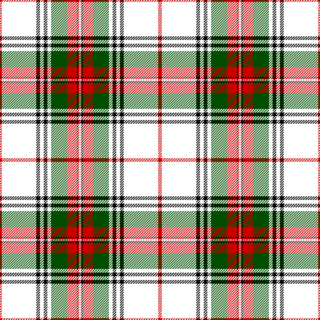Tartan is more than just a patterned fabric – it is a vibrant symbol of Scottish heritage, identity, and belonging. Instantly recognisable by its distinctive criss-cross of coloured stripes, each tartan is woven with a unique arrangement of colours and lines known as a sett. But tartan is not just a matter of style; it’s steeped in history and tradition.
Many clans in Scotland adopted their own specific tartans as a way of showing allegiance and unity. Over time, these patterns became associated with particular families, regions, or regiments, resulting in the vast range of tartans we see today. From ancient designs passed down through generations to modern variations created to commemorate new chapters in clan history, tartan continues to evolve while remaining a proud emblem of Scottish culture.
In this guide, we’ll explore a selection of notable clan tartans, each with its own story to tell – and a pattern as unique as the people it represents.
The Purpose and Roots of Tartan
Tartan is woven deep into the fabric of Highland life – quite literally. Its origins lie in practicality, regional identity, and the materials at hand most notably wool Early tartans were coloured using natural vegetable dyes, sourced from local plants, mosses, and berries. These dyes produced earthy reds, browns, greens, and blues, meaning that early tartans were as much a reflection of the landscape as they were of the people who wore them.
Worn as part of traditional Highland dress, tartan was most commonly fashioned into the great kilt, or feileadh mòr – a large length of fabric draped and belted around the body, serving as both clothing and blanket. Over time, this evolved into the more familiar tailored kilt worn today, often accompanied by other Highland accessories such as the sporran, ghillie brogues, and bagpipes – the unmistakable sound of which has become inseparable from the imagery of tartan itself.
Highland games played a key role in celebrating clan culture and keeping traditional skills alive. Alongside feats of strength, music, and dance, these gatherings were also an opportunity to proudly display tartan and clan colours. The patterns signified family ties, regional loyalty, and social identity – a kind of visual shorthand in a landscape of shared history and rivalry.
Although tartan is distinct from tweed, both share common roots in the rural weaving traditions of Scotland. Where tartan was often symbolic and ceremonial, tweed developed as a hard-wearing, practical cloth for the working countryside. Together, they represent two sides of Scottish textile heritage: tartan for belonging, tweed for resilience.
Tartan has always carried meaning – woven not just from wool, but from stories, geography, and kinship.
Notable Tartan Finder
There are thousands of tartan designs in Scotland and no doubt you will be familiar with your own tartan unique to your clan or family. The Scottish Register of Tartans currently holds over 7,000 registered designs according to the Scottish Register of Tartans, and the number continues to grow.
We couldn't list all 7000 tartans here but we have created a list of notable tartans in our 'notable tartan finder'. Discover centuries of history in these tartans that are an essential ingredient of any kilt.
Royal and Noble Tartans
House of Stewart

The best-known royal sett, adopted by the House of Stuart in 1831 and now personal to the reigning monarch.

A second Stuart tartan, popularised by Vestiarium Scoticum and once called George's personal pattern with softer colours.
Duke of Rothesay

The heir-apparent's own sett; currently worn only by Prince William when in Scotland.
William Hamilton, 2nd Duke of Hamilton

An 18th-century red-and-green pattern linked to William Hamilton, 2nd Duke of Hamilton.
Prince Charles Edward Stuart Tartan

A 'small Stewart' variant with reduced red, recorded by Wilsons of Bannockburn in 1819 and later tied to Bonnie Prince Charlie.
Kilt Alterations in Glasgow and Edinburgh
We offer kilt alterations and repairs in Scotland from our stores in Glasgow and Edinburgh. For example, we can re-size your kilt, repair holes, replace a buckle or provide a deep clean tack and press.
For more information, visit our Kilt Repair Services page.
Send us your kilt by courier, we carry out the repair and send it back to you.
Book your repair online and track your order at any time through our 'Track my Repair' page. If you live in Scotland, you can always drop your kilt off at one of our stores in Glasgow or Edinburgh to save having to courier it to us.
If you are having your kilt altered or repaired for a special occasion please allow plenty of time. If you need your outfit very quickly we can provide expedited services for an additional fee. These are detailed on the individual repair service pages.